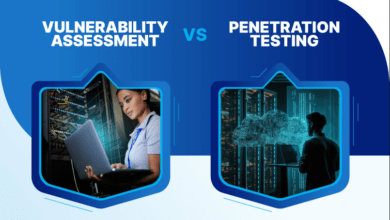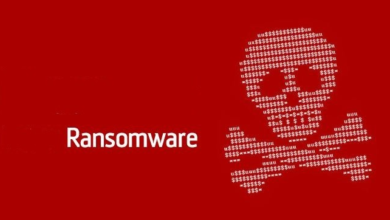XZ Vulnerability Exposed: How to Stay Safe ?

In the labyrinthine landscape of software security, XZ vulnerability emerges as a specter of digital peril, its implications far-reaching and its nuances intricate. As the digital realm evolves with each technological leap, so too do the methods of exploitation that threaten our systems. Understanding the XZ vulnerability requires peering into the covert mechanisms that undermine data integrity and system stability. This article navigates through the depths of this vulnerability, unraveling its origins, mechanisms, and implications. Brace yourself for an exploration that unveils not just the threat, but also the strategies to fortify against it.
Table of Contents
XZ vulnerability backdoor

The XZ vulnerability backdoor has surfaced as a critical issue in cybersecurity circles, posing significant risks to systems relying on the XZ Utils compression tool. This exploit, identified as CVE-2024-3094, exploits weaknesses within the xz vulnerability‘s codebase, allowing unauthorized access and potential manipulation by malicious entities. Operating covertly, the backdoor leverages flaws in the compression algorithm to circumvent detection measures, compromising system integrity.
Organizations using xz in their software infrastructure are particularly vulnerable, as the backdoor facilitates remote command execution and unauthorized data access. Addressing this threat necessitates immediate action, including patching affected systems and implementing robust security protocols to defend against emerging cyber threats. Understanding the intricacies of the xz vulnerability backdoor is essential for IT professionals tasked with securing digital assets in today’s evolving cybersecurity landscape.
How the XZ vulnerability backdoor operates
The operation of the XZ Utils backdoor vulnerability unfolds through a series of intricate steps, exploiting specific weaknesses in the xz to infiltrate systems:
- Exploitation: Malicious actors identify and exploit vulnerabilities within the xz vulnerability‘s codebase, often leveraging obscure flaws in the compression algorithm.
- Covert Access: Once exploited, the backdoor provides covert access to the affected system, bypassing traditional security measures undetected.
- Remote Control: Through the backdoor, unauthorized users gain remote control capabilities, allowing them to execute commands and manipulate system functionalities.
- Data Compromise: The vulnerability facilitates unauthorized access to sensitive data stored or processed by applications utilizing the compromised xz vulnerability.
- Persistence: To maintain access, the backdoor may establish persistence mechanisms, ensuring continued exploitation even after initial detection or attempts to mitigate.
XZ Utils Vulnerability criteria
The XZ Utils Vulnerability criteria encompass a nuanced set of conditions that expose systems to potential exploitation through the xz :
- Codebase Analysis: Vulnerability assessments often begin with a thorough analysis of the xz vulnerability‘s codebase, identifying areas susceptible to exploitation.
- Behavioral Patterns: Anomalies in the xz vulnerability‘s behavioral patterns, such as unexpected data handling or memory management, can indicate potential vulnerabilities.
- Attack Surface: The xz vulnerability‘s attack surface expands with its integration into various software systems, increasing the potential impact of any identified vulnerabilities.
- Exploit Potential: Vulnerabilities within the xz are scrutinized based on their exploit potential, assessing the feasibility and impact of potential attacks.
- Mitigation Complexity: Evaluating the xz vulnerability includes consideration of the complexity involved in mitigating identified weaknesses, balancing immediate security needs with long-term system stability.
Who is affected by CVE-2024-3094?
| S | Affected | Comments | Reference |
| Debian (testing, unstable and experimental distributions) | Yes | Vulnerable Versions are 5.5.1alpha-0.1 to 5.6.1-1 | https://lists.debian.org/debian-security-announce/2024/msg00057.html |
| Debian (Stable Version) | No | No Debian stable versions are known to be affected. | https://lists.debian.org/debian-security-announce/2024/msg00057.html |
| Fedora 41, Fedora Rawhide | Yes | Vulnerable versions are xz-5.6.0-* and xz-5.6.1-* | https://www.redhat.com/en/blog/urgent-security-alert-fedora-41-and-rawhide-users |
| Fedora 40 | No | RedHat recommends that users downgrade to a 5.4 build of XZ as a precaution | https://www.redhat.com/en/blog/urgent-security-alert-fedora-41-and-rawhide-users |
| Alpine Edge | Yes | Vulnerable versions are 5.6.0 to 5.6.1 | / |
| Kali Linux | Yes | Backdoored version of xz was included in Kali Linux (xz-utils 5.6.0-0.2) between March 26 and March 28 | https://www.kali.org/blog/about-the-xz-backdoor/ |
| Arch Linux | Yes | Vulnerable versions are 5.6.0-1 to 5.6.1-1 | https://archlinux.org/news/the-xz-package-has-been-backdoored/ |
| openSUSE Tumbleweed and openSUSE MicroOS | Yes | Backdoored version of xz was included in Tumbleweed and MicroOS between March 7 and March 28 | https://news.opensuse.org/2024/03/29/xz-backdoor/ |
| SUSE Linux Enterprise and Leap | No | Both Enterprise and Leap are isolated from OpenSUSE and are unaffected. | https://news.opensuse.org/2024/03/29/xz-backdoor/ |
| RedHat | No | No versions of Red Hat Enterprise Linux (RHEL) are affected. | https://www.redhat.com/en/blog/urgent-security-alert-fedora-41-and-rawhide-users |
| Ubuntu | No | No stable ubuntu versions are affected | https://ubuntu.com/security/CVE-2024-3094 |
| Amazon Linux | No | Amazon Linux customers are not affected by this issue, and no action is required | https://aws.amazon.com/security/security-bulletins/AWS-2024-002/ |
CVE-2024-3094: Detection with Uptycs CNAPP

Detecting CVE-2024-3094 with Uptycs CNAPP involves a sophisticated approach that leverages advanced analytics and real-time monitoring capabilities:

- Behavioral Analysis: Uptycs CNAPP employs deep behavioral analysis to scrutinize the activities of applications using the xz vulnerability, identifying deviations that may indicate exploitation.
- Anomaly Detection: Through anomaly detection algorithms, Uptycs CNAPP flags unusual patterns in system behavior associated with the xz vulnerability, enabling rapid response to potential threats.
- Threat Intelligence Integration: Continuous updates from global threat intelligence sources empower Uptycs CNAPP to recognize known signatures and behaviors associated with CVE-2024-3094 and other vulnerabilities.
- Real-time Alerts: Immediate alerts notify administrators of suspicious activities related to the xz vulnerability, allowing prompt investigation and mitigation.
- Forensic Capabilities: In-depth forensic capabilities provided by Uptycs CNAPP enable detailed post-incident analysis, facilitating root cause identification and strengthening defenses against future exploits.
Conclusion
In conclusion, addressing the xz vulnerability demands vigilant cybersecurity practices and proactive mitigation strategies. The discovery of vulnerabilities like xz vulnerability serves as a reminder of the ever-present threats in digital ecosystems. Organizations must prioritize regular software updates, robust anomaly detection, and threat intelligence integration to fortify against potential exploits. By staying informed and proactive, stakeholders can mitigate risks, safeguard sensitive data, and uphold the integrity of their digital infrastructure amidst evolving cyber threats. Vigilance remains key in the ongoing battle against vulnerabilities such as xz vulnerability, ensuring resilience and security in today’s interconnected world.




I don’t think the title of your article matches the content lol. Just kidding, mainly because I had some doubts after reading the article.